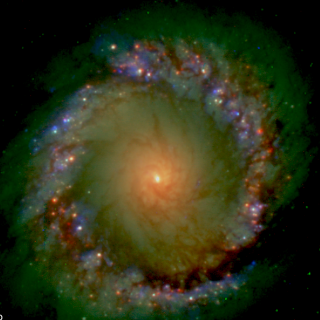Bibcode
Lobanov, A. P.; Sutton, A. D.; Roberts, T. P.; Mezcua, M.
Bibliographical reference
Monthly Notices of the Royal Astronomical Society, Volume 436, Issue 4, p.3128-3134
Advertised on:
12
2013
Citations
55
Refereed citations
49
Description
The most extreme ultraluminous X-ray sources (ULXs), with LX
> 5 × 1040 erg s-1, are amongst the best
candidates for hosting intermediate-mass black holes (IMBHs) in the
haloes of galaxies. Jet radio emission is expected from a sub-Eddington
accreting IMBH in the low/hard (radio bright) state. In a search for
such IMBH jet radio emission, we have observed with the Very Large Array
(VLA) at 5 GHz a sample of seven extreme ULXs whose X-ray properties
indicate they are in the hard state. Assuming they remain in this state,
the non-detection of radio emission for six of the target sources allows
us to constrain their black hole mass to the IMBH regime, thus ruling
out a supermassive black hole nature. For the extreme ULX in the galaxy
NGC 2276, we detect extended radio emission formed by two lobes of total
flux density 1.43 ± 0.22 mJy and size ˜650 pc. The X-ray
counterpart is located between the two lobes, suggesting the presence of
a black hole with jet radio emission. The radio luminosity allows us to
constrain the black hole mass of this source to the IMBH regime; hence,
the extreme ULX in NGC 2276 could be the first detection of extended jet
radio emission from an IMBH. The radio emission could also possibly come
from a radio nebula powered by the ULX with a minimum total energy of
5.9 × 1052 erg, thus constituting the most powerful and
largest ULX radio nebula ever observed.
Related projects

The Central PARSEC of Galaxies using High Spatial Resolution Techniques
PARSEC is a multi-wavelength investigation of the central PARSEC of the nearest galaxies. We work on black-hole accretion and its most energetic manifestations: jets and hot spots, and on its circumnuclear environment conditions for star formation. We resort to the highest available angular resolution observations from gamma-rays to the centimetre
Almudena
Prieto Escudero